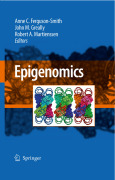
While a multicellular individual has only one genome, it has multiple epigenomes reflecting the diversity of cell types and their properties at different times of life; in health and in disease. Relationships are emerging between theunderlying DNA sequence and dynamic epigenetic states and their consequences,such as the role of RNA interference and non-coding RNA. These integrated approaches go hand-in-hand with studies describing the genomic locations of epigenetic modifications in different cell types at different times. The excitement and curiosity surrounding epigenomics is driven by a growing community of researchers in a burgeoning field and the development of new technologies built onthe backbone of genome sequencing projects. Research has shown that the adaptability and vulnerability of epigenetic states has profound effects on naturalvariation, the response of the genome to its environment and on health and disease. Epigenomics tells us how the genome works Characterising the epigenome is the next big step after determining the sequence of the genome Epigenetic influences are major causes of disease The epigenome is dynamic and can change in response to both intrinsic and extrinsic cues INDICE: From the contents Preface/Introduction: Introduction to epigenomics. Section I – Epigenomic technologies and analytical approaches. Section II –Roles of DNA, RNA and chromatin in epigenomics. Section III – Epigenetic control of developmental processes. Section IV – The epigenome in health and disease. Index.
- ISBN: 978-1-4020-9186-5
- Editorial: Springer
- Encuadernacion: Cartoné
- Páginas: 436
- Fecha Publicación: 01/02/2009
- Nº Volúmenes: 1
- Idioma: Inglés
